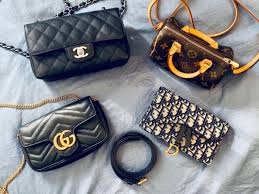The luxury market is experiencing an upheaval as tourist spending slows significantly across Europe and Japan, raising concerns for high-end brands heavily reliant on international shoppers. This article delves into the factors contributing to this trend and its potential impact on the luxury industry.
Current Trends in Luxury Sales
In the midst of fluctuating consumer behavior, recent figures indicate a noticeable drop in tourist spending. Notably, luxury brands such as Louis Vuitton and Gucci saw record high sales last year, with a 57% increase at the Louis Vuitton and Dior group in Japan alone. However, recent earnings reports from brands such as Moncler and Prada reveal that their sales took a hit, attributed primarily to reduced spending from American tourists in Europe and Chinese visitors in Japan.
Specifically, Moncler reported a slight 2% decline in organic sales, emphasizing the importance of maintaining robust international tourist flows for overall health in the luxury sector. Similarly, Prada indicated that about 30% of its sales come from tourists, hinting at the fragility of current revenue streams.
Currency Fluctuations and Their Effects
The current economic climate, especially the devaluation of the US dollar against the euro by over 10% in the first half of 2025, has diminished motivations for American travelers seeking lavish shopping experiences abroad. This decline adds to the list of struggles faced by luxury retailers trying to lure back customers who were once eager to spend on designer goods during European trips.
The Broader Context of Consumer Spending
Analysts from Citi have forecasted a challenging outlook for brands, including Swiss-based Richemont, as they grapple with lower tourist spending in vital markets. This jeopardizes their anticipated revenue, with Bernstein estimating a potential 2% drop in global luxury revenues for 2025—dramatically altering previously optimistic projections of growth. Economic uncertainty in both European and Asian markets intensifies fears about global spending on luxury products.
Consumer Sentiment and Market Dynamics
With changing economic fortunes, consumer confidence—particularly among Chinese shoppers—has been on shaky ground. Reports suggest that many tourists currently favor experiences and authentic journeys. Rather than indulging in retail therapy, travelers exhibit an inclination towards exploration, valuing experiences over extravagant purchases. This shift may incite luxury brands to reconsider their pricing strategies that have escalated in recent years.
Adjustments in Brand Strategies
The luxury sector is internally reflecting on its broader strategy as they face increasing pressure to provide value for money to their clientele. Brands have to recalibrate their approach to appeal more to the middle-class market segments, focusing on accessibility without sacrificing their exclusive image. Analyst Luca Solca aptly noted that luxury consumers seek value, pointing out that tourists visiting Japan are not merely sightseeing but are disinterested in spending extravagantly.
Historical Overview and Future Implications
The luxury market has historically withstood economic challenges through resilience and adaptability. Luxury brands thrive during times of economic prosperity, and as capitalism evolved, so too did consumer tastes and preferences. However, the current landscape delineates a potential shift in focus, with many brands needing to pivot towards sustainability and authenticity.
The impact of current spending habits on tourism can serve as a wake-up call for luxury retailers. Revisiting historical transactions between traveler demographics could provide insights into how brands can effectively engage their audience during times of economic challenges. Moving forward, it will be essential for luxury companies to create experiences that resonate with consumers’ desires for meaningful connections over mere material consumption. The potential decline of luxury tourism in high-profile regions underscores this necessity.
Päätelmä
As the luxury sector braces for further changes, understanding consumer preferences and adjusting sales strategies will be pivotal. With growing consumer awareness about inflation, pricing, and the overall economic outlook, luxury brands may find themselves at a crossroads, needing to reevaluate and redefine their market approaches. For sailing enthusiasts and those drawn to oceanic adventures, such economic movements may also hint at evolving tourism experiences, as travelers increasingly seek nature-centric escapades instead of traditional shopping sprees.
For those interested in marine tourism, regions still thrive on oceanic offers, where yachts and sailing gear remain in high demand. During this adjusting season in the luxury segment, it becomes evident that services like GetBoat.com serve as a vital resource for those wishing to navigate the waters, providing a vast marketplace for renting a variety of boats and yachts that caters to diverse tastes and budgets.

 Declining Tourist Spending Challenges Luxury Brands">
Declining Tourist Spending Challenges Luxury Brands">
